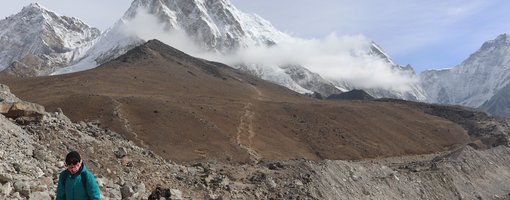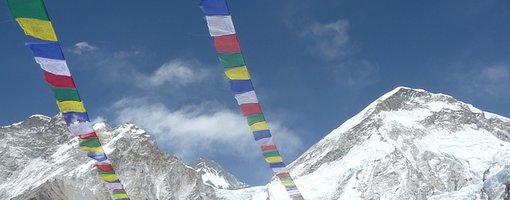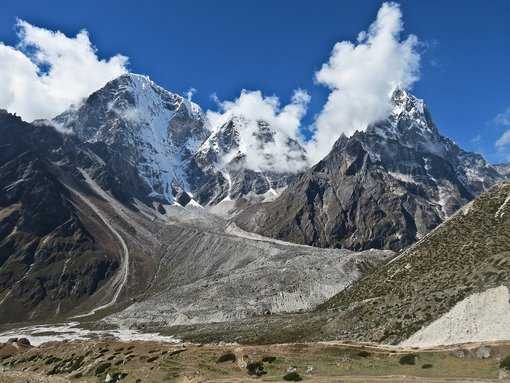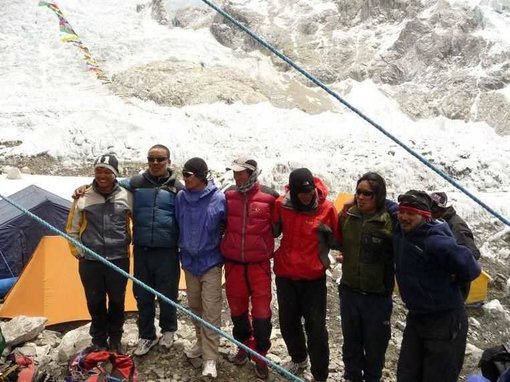Sherpa people
The history and origination of the Sherpa people are something the mountain region of Nepal will always be famous for. The formation of the name “Sherpa” is quite interesting in itself. “Sherpa” derives its name from two words, shar “east” and “wa” people. Therefore, Sherpa is basically people who come from the eastern part of Nepal. The history says, one of the first people that came to Khumbu, initially crossed his way through the Rolwaling valley and TahiLhapcha pass. The present-day Sherpas are a tribe of Tibetan origin and are the descendants of a small group of people (Thimi) who came to Khumbu from Kham Salmo-Gang, which is in the east of Tibet.
The Sherpa's account for a meager population of approximately 55,000 in the whole Nepal and around 9,500 of them live in the Khumbu region in the south of Everest itself. For 600 years, the increasing rate of the migrants from Tibet to the mountain valleys of Nepal is worth mentioning. As they are known for their physical strength and climbing feats, they have been able to establish themselves as an important part of the society, and are now, one of the most recognized clans in the country. The tribe had made an attempt to revamp the mountaineering sector by achieving the most number of recognition worldwide for their mounting abilities. The tourism and climbing industry has been blooming in Nepal interminably ever since. Sherpas have made world records among both men and women by climbing the Mt. Everest in the shortest span of time and also marking their accomplishment by having the youngest Sherpa climber reach the summit. However, there is more to them than just climbing. Coming from Tibet and retaining a strong Buddhist religion, the Sherpa community is rich in their traditional practices. From their exceptionally ethnic long sleeve robes, “Kitycow” to their exclusive leather craft works which has a touch of the nineteenth century is simply remarkable.
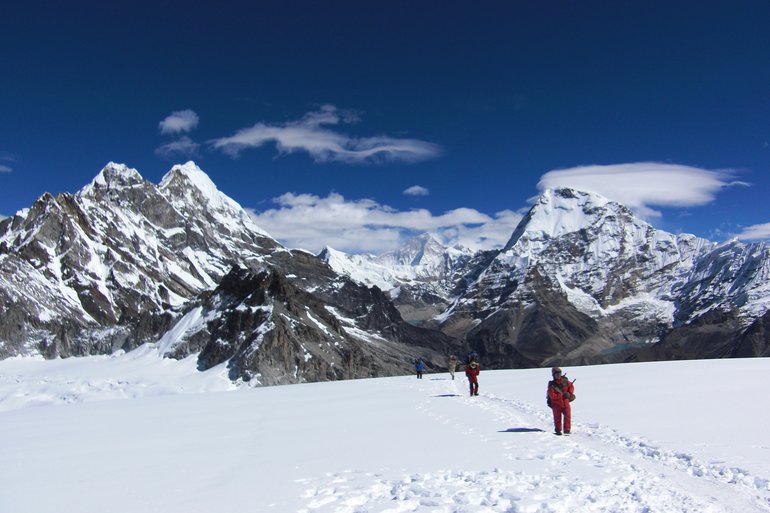
Everest Base Camp Trek Attractions
Sherpa Religion and Culture
In Solu-Khumbu the most common practice in the community is Nying ma pa, an ancient school or tradition of Tibetan Buddhism. Buddhists spiritual leaders also are known as lamas perform the day-to-day rituals for the people. They are believed to have taught the religion to the people and have established the communities who follow this belief passionately. Allegedly, these Sherpa and Tibetan Ngakpa (lay lamas) brought the teaching which was initially founded by Padmasambhava (commonly known as Guru Rinpoche) during the eighth century. History claims that a lama named RigdzinGodem found some of these books, named the Chang-ter, hidden in Northern Tibet. The other lama, Nyatak – Nyung, found the Lho-ter in Southern Tibet. The Terton, TerdakLingpa found the books and wrote the texts used in the Sherpa's Pujahs, religious rituals. Therefore, people believe, Lamas called Tertons are incarnations of Guru Rinpoche who rediscovered these hidden teachings.
The most important aspect of the Tibetan Buddhism is their monastery, well-known as Gompa. The monks and lamas spend the lifetime in isolation inside the Gompa in search of truth and religious enlightenment. As more people came to Khumbu, the more people united to project their valley and established different villages preserving and conserving their religion. Nevertheless, they are still closely tied to their Buddhist beliefs which encourage their daily activates of farming, herding, and trading.
Sagarmatha (Everest) National Park
Located at the most alluring part of Nepal where most of the Everest Trekking Region lies, Sagarmatha (Everest) National Park spreads over an area of 1148 square kilometers. Everest National Park situated in the Himalayan ecological zone in the Khumbu region of Nepal, comes under the UNESCO world heritage site and is home to a multitude of flora and fauna and ethnic Sherpa tribes. The park was established in 19th of July, 1976 with over 2,500 Sherpa inhabitants and was inscribed as a Natural World Heritage Site in 1979. The park comprises of the dazzling Dudhkoshi and Bhotekoshi Rivers in its upper catchment areas and rich Himalayan rugged terrain and gorges of the high Himalayas which extends from 2,860m at Lukla to the top of the world's highest mountain- Mt. Everest at 8,848 m above the sea level. Other dramatic and iconic mountain peaks such as Lhotse, Cho Oyu, Thamserku, Nuptse, Amadablam and Pumori which are above 6,000 m also fall under this region. Above 5,000 m in this national park barren land, 69% is occupied by the park, 28% of grazing the land and remaining 3% are left as forest.
Flora and Fauna
Aside from the beauty of aesthetically pleasing mountain peaks and incredible culture of the ethnic Tibetan tribes, Everest region is also popularly known for its wide range of flora and fauna with varieties of plants and flourishing vegetation which grows in this region. Primarily, the region is divided into three different elevations, lower, middle and higher, as the altitude increases. In the lower region which is at an elevation of 3,500m (11, 500ft), mainly contains birch, juniper, blue pines, firs, bamboo, and rhododendron. In the middle elevation, the soil and weather favor only dwarf and shrubs. Climbing further high up the elevation, flora types are limited to lichens and mosses only. The permanent snow line in the Himalayas starts from an elevation of 5,750 meters (18,860 ft), therefore the plants cease to grow from this level.
Fauna in the Everest Region is truly a paradise for animal lovers. It consists of different endangered animals which are rarely seen in other parts of the world such as Snow Leopard, Musk Deer, Wild Yak, Red Panda and Himalayan Black Bear. Everest National Park is home to about 118 species of birds including Himalayan Monal, Impeyan pheasant (Danphe), Red-billed chough, and Yellow-billed chough.
Tengboche monastery
The sanctuary at the Tengboche Monastery is something which has to be stated precisely since it holds a great significance in the Everest Region. Tengboche Monastery which is also known as Dawa Choling Gompa is a famous Tibetan Buddhist monastery located in the Tengboche village in Khumjung region. In 1916, Lama Gulu built the monastery with strong links to its mother monastery, Rongbuk Monastery situated in Tibet. However, in 1934, a disastrous earthquake destroyed the monastery but was subsequently rebuilt. The unfortunate event was followed by another fire in 1989 which burnt down the monastery. The unity of the community and international assistance successfully rebuilt the monastery for the third time and in the present day, the monastery stands strong and tall.
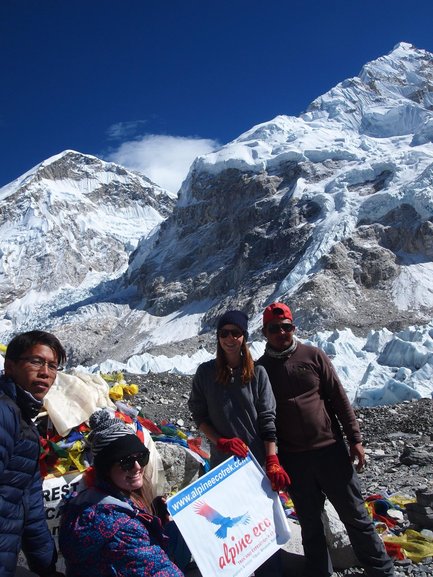
Everest Base Camp Trek
The monastery seems alive with staggeringly enchanting mountains like Mt. Amadablam, Mt. Everest, Mt. Nuptse, Mt. Tawache, Mt. Thamserku, and Mt. Lhotse as its background. Also, apart from Tengboche monastery in the Everest Region, Thame, Khumjung, and Pangboche are some of the other famous monasteries that travelers visit.


